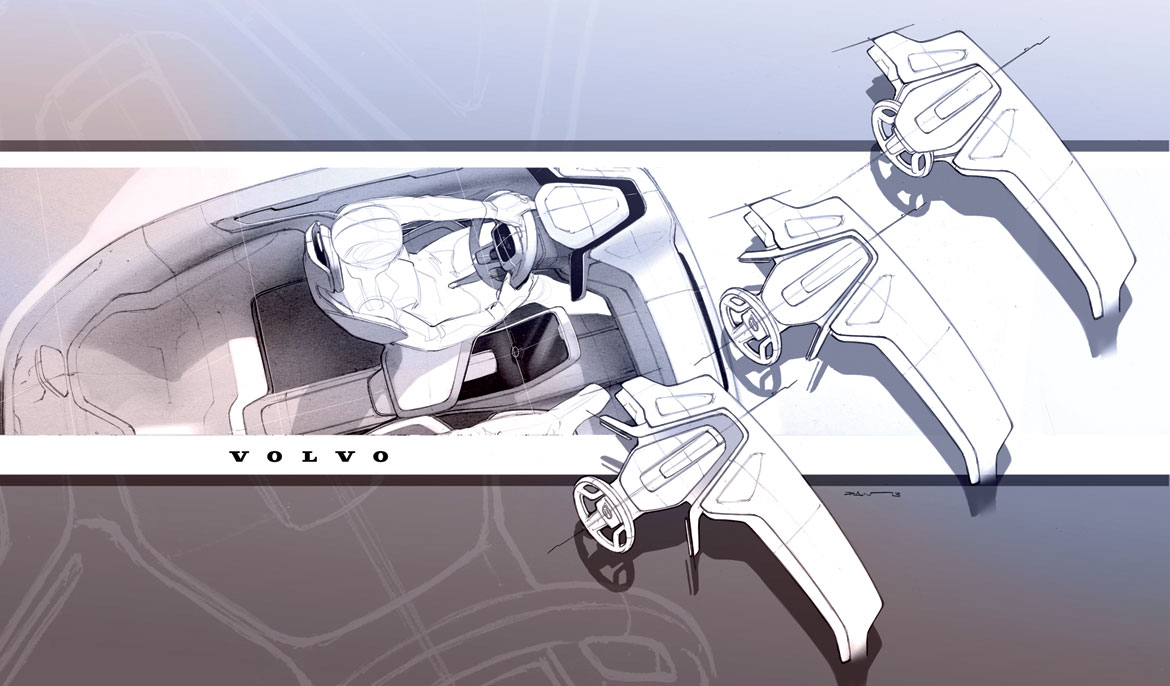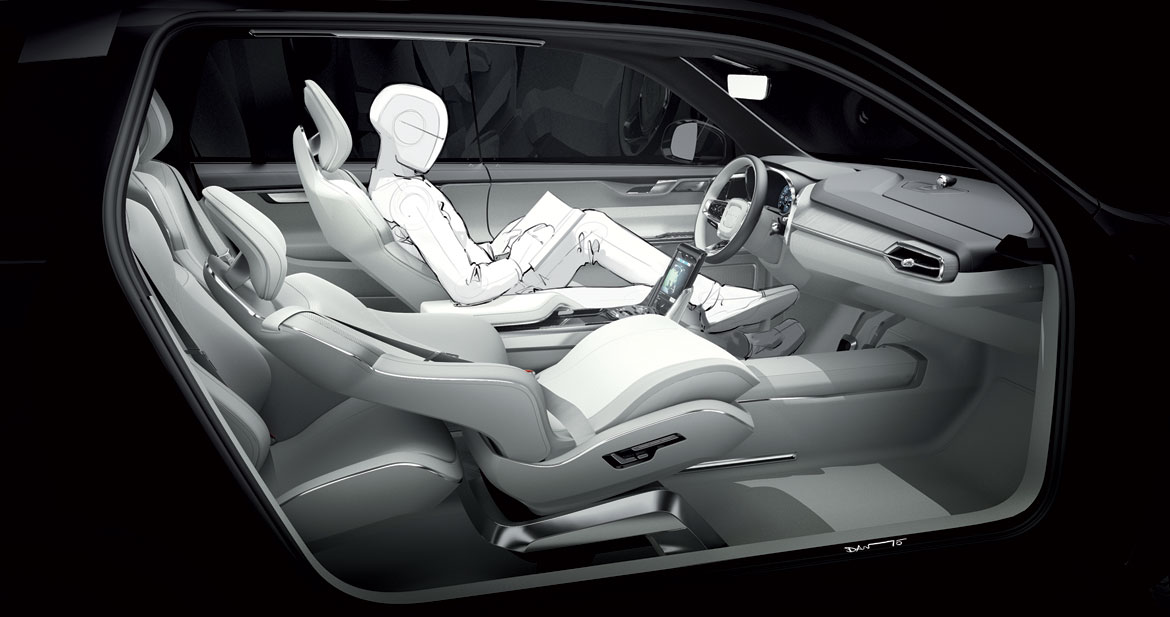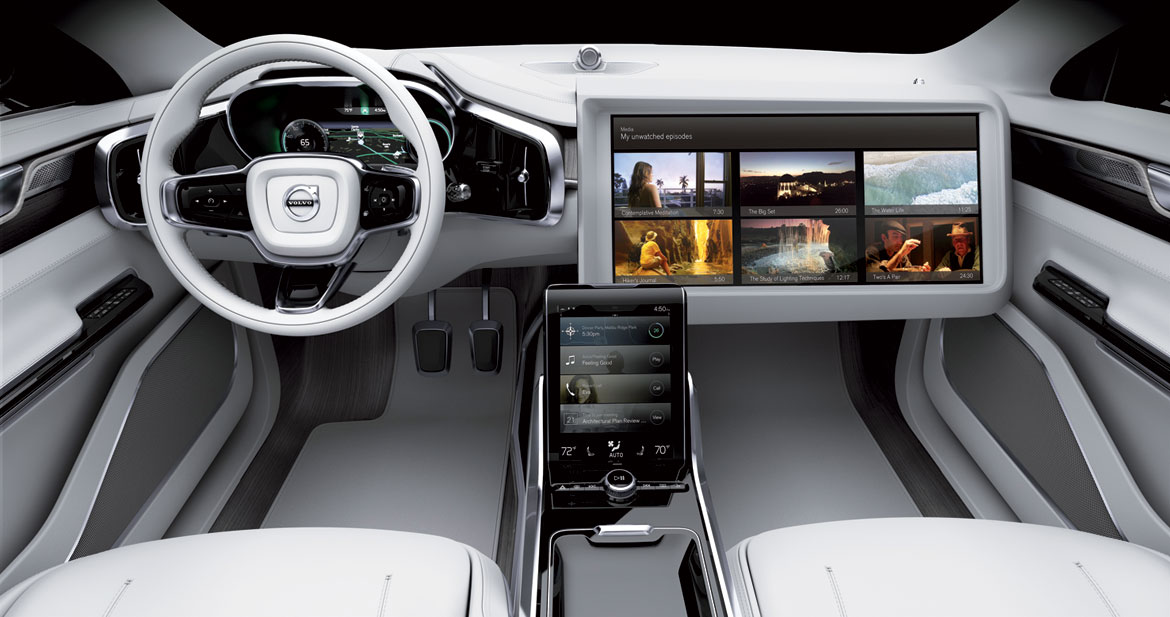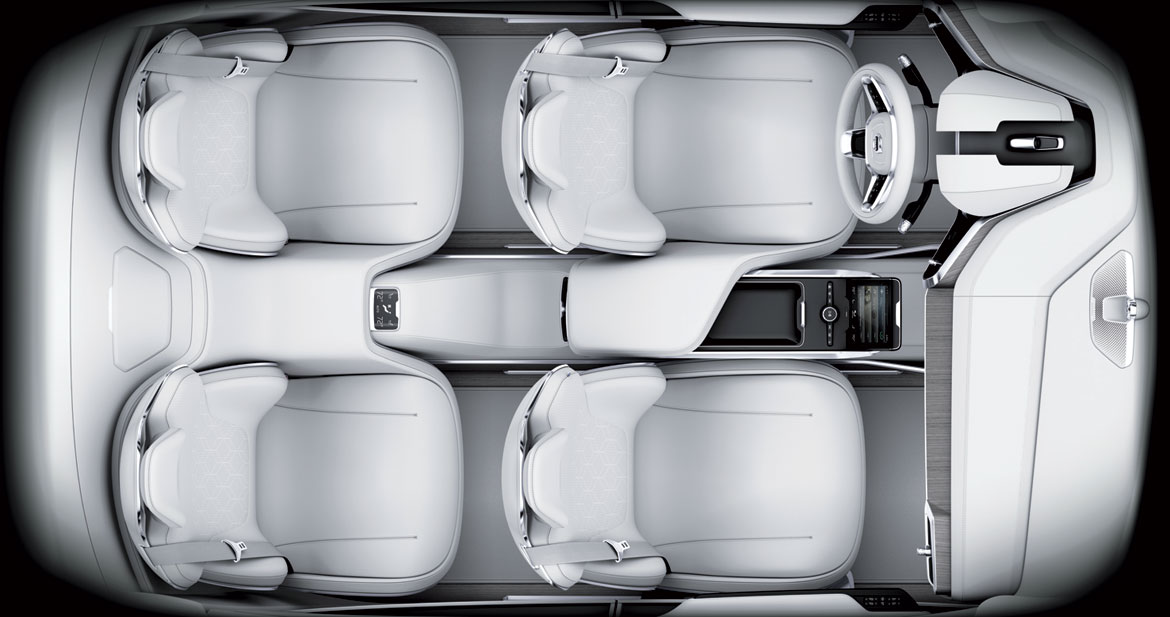The problem was how to interpret AD in the right way”. Thomas Ingenlath heads Volvo design and that’s how he explains the birth of Concept 26, the Swedish manufacturer’s contribution to the intriguing world of AD: Autonomous Driving. “We avoided going for an alluring showcar”, he says, “but preferred an intellectual approach, given that the technology already exists. As the car’s exterior is not involved, our Concept 26 regards solely the interior”. The schedule is very tight: “It’s like a race for pole position”, says Robin Page, head of Volvo’s interior design department, who was assisted in this project by Daniel Forsgren: “All the big manufacturers are working on this and it was important to present our own take on it”.
As early as this year, Volvo will be fitting three of its XC90 flagships with a complete AD system so that the international press can have a “taste” of it. “In 2017”, says Page, “we will be unleashing a hundred units on to the streets of Göteborg so that our customers can try it out”. They already know when it will go on the market: 2020, in just four years’ time.
In Volvo’s AD philosophy, the first novelty is the absence of swivel seats at the front that others have gone for (Mercedes, for example). “For two reasons”, Ingenlath explains. “The first is that we have no intention of increasing the length of our cars simply to accommodate that kind of seat. The second is that we do not think any more communication with the rear seat passengers is necessary: for most of the time the driver is on his own so we prefer to focus on how he relaxes, how to use his time better”. The name Concept 26 derives from the fact that a motorist employs an average of 26 minutes every day to get to work, although the system is also indicated for those boring drives down the motorway.
As Page explains, there are three system modes for the XC90 and, straight after, for the new S90: “Drive, with the motorist in full control of the car; Relax, with the seat retracting while the back reclines; Create, an intermediate position”. In both AD positions a return to normal driving takes 3 seconds, namely much quicker than with a swivel seat. Page adds: “the control panel slides back with the seat, while the steering-wheel moves away towards the dash while a 25 inch screen in 21:9 ultralarge format emerges from the passenger side. In Create position even a table slides out from the door”.
One of the biggest challenges in the creation of Concept 26 was the design of the reclinable seat. “When the back of a standard seat is lowered, the body tends to slip forward”, explains Forsgren. “Doug Fraser of our California studio, has developed an ingenious new type of hinge which keeps the pelvis from moving”. But it is safety, one of Volvo’s strong points, that is at stake above all else. “It appears to be a big jump”, Ingenlath comments, “but in fact motorists will realise that they have overestimated the difficulties”.
[tz_plusgallery id=”9″]
Full article in Auto & Design no. 216
















